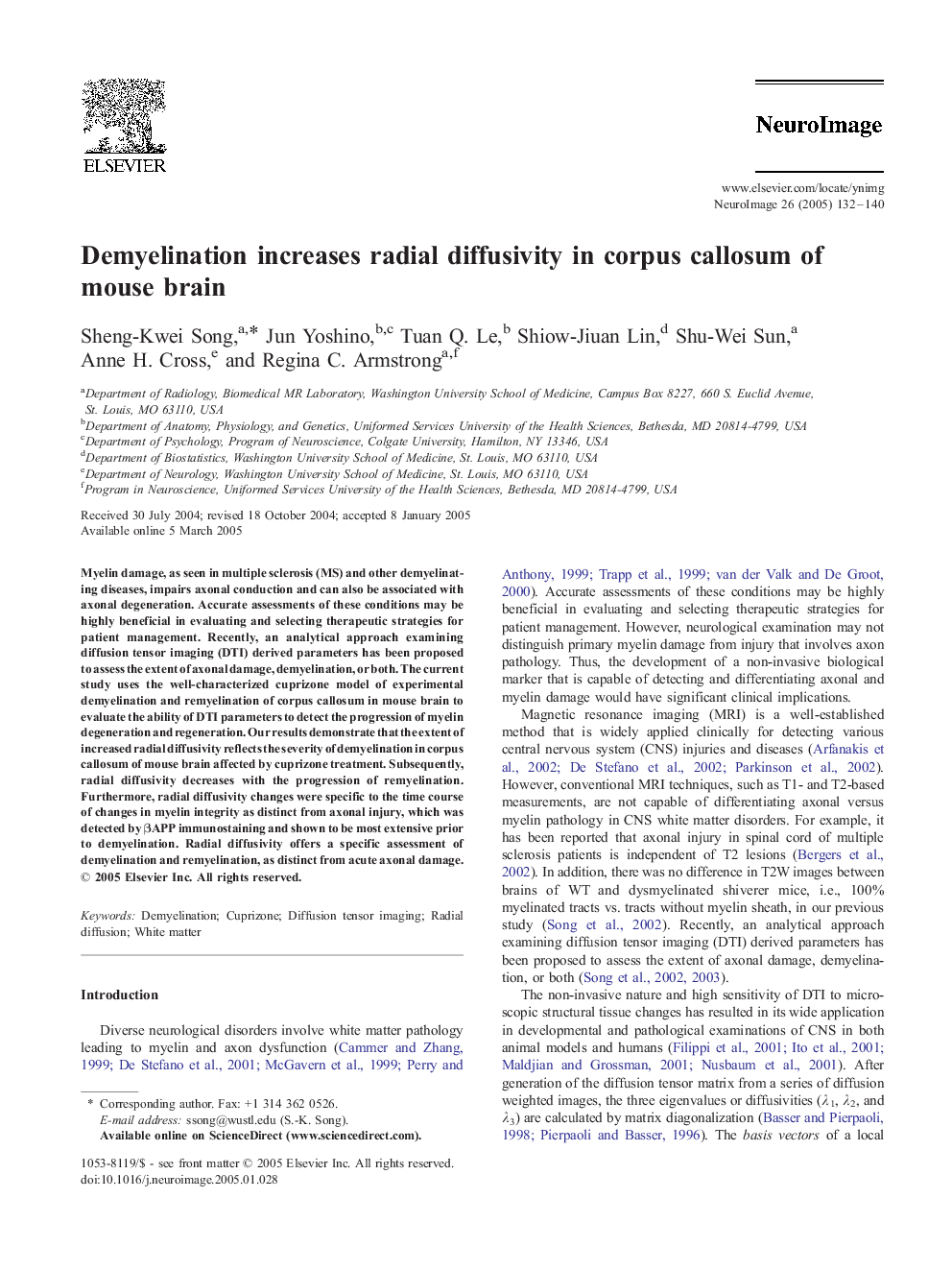| Article ID | Journal | Published Year | Pages | File Type |
|---|---|---|---|---|
| 9197979 | NeuroImage | 2005 | 9 Pages |
Abstract
Myelin damage, as seen in multiple sclerosis (MS) and other demyelinating diseases, impairs axonal conduction and can also be associated with axonal degeneration. Accurate assessments of these conditions may be highly beneficial in evaluating and selecting therapeutic strategies for patient management. Recently, an analytical approach examining diffusion tensor imaging (DTI) derived parameters has been proposed to assess the extent of axonal damage, demyelination, or both. The current study uses the well-characterized cuprizone model of experimental demyelination and remyelination of corpus callosum in mouse brain to evaluate the ability of DTI parameters to detect the progression of myelin degeneration and regeneration. Our results demonstrate that the extent of increased radial diffusivity reflects the severity of demyelination in corpus callosum of mouse brain affected by cuprizone treatment. Subsequently, radial diffusivity decreases with the progression of remyelination. Furthermore, radial diffusivity changes were specific to the time course of changes in myelin integrity as distinct from axonal injury, which was detected by βAPP immunostaining and shown to be most extensive prior to demyelination. Radial diffusivity offers a specific assessment of demyelination and remyelination, as distinct from acute axonal damage.
Related Topics
Life Sciences
Neuroscience
Cognitive Neuroscience
Authors
Sheng-Kwei Song, Jun Yoshino, Tuan Q. Le, Shiow-Jiuan Lin, Shu-Wei Sun, Anne H. Cross, Regina C. Armstrong,
